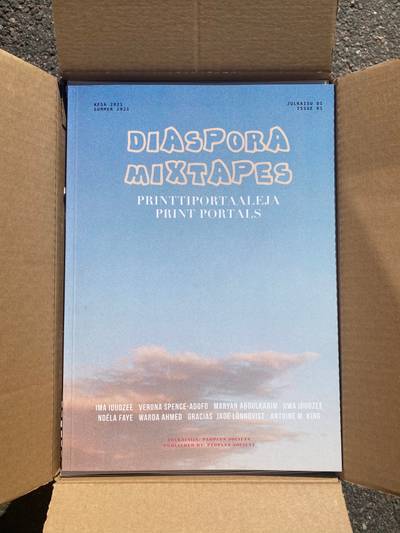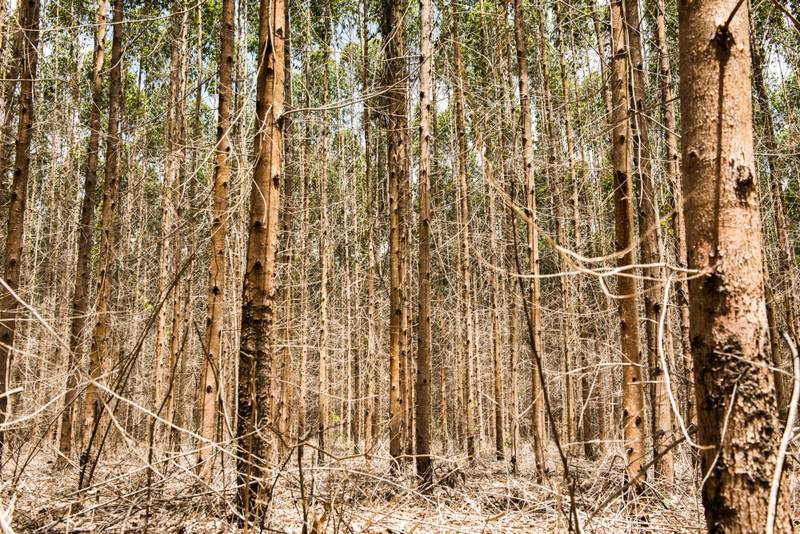

The aftermaths shown on the harmful farming
Riina Rastas is a Finnish journalist and a student of Intercultural Encounters in the University of Helsinki. Rastas has worked in six different media outlets and is currently doing an internship in a magazine. Last summer Rastas was living in Tanzania and has also lived in South Korea, the United States and Australia. Through these experiences she has learned to understand that people are more similar to each other than they think. Rastas is passionate about human rights and global development and hopes to advance them in the future.
MATA | Directed by Fábio Nascimento, Ingrid Fadnes | Duration: 1h 19 min | Language: Portuguese, English subtitles
What do the words “killing” and “forest” have in common? In Portuguese, they are both mata. MATA is also the name of a documentary about eucalyptus farming in the Amazon. The name is fitting as the eucalyptus mata, eucalyptus forest, is killing the mata, the rainforest.
The MATA documentary introduces the problems of eucalyptus farming by introducing a story of a farmer, Etevaldo Pereira, who, instead of doing big-scale, harmful farming, respects the forest. It also introduces Pataxó, who, like many other indigenous people, have suffered from the business that derives from colonialism.
The side characters of the story are researchers who test the knowledge of the indigenous people and the common folk through scientific methods to find facts. The villains can be seen to be the global corporations that destroy the natural rainforest to plant eucalyptus in the soil for a profit.
MATA is a story situated in the Amazon, one that is true, topical and impactful. As MATA is a story, the review will also start as a story.
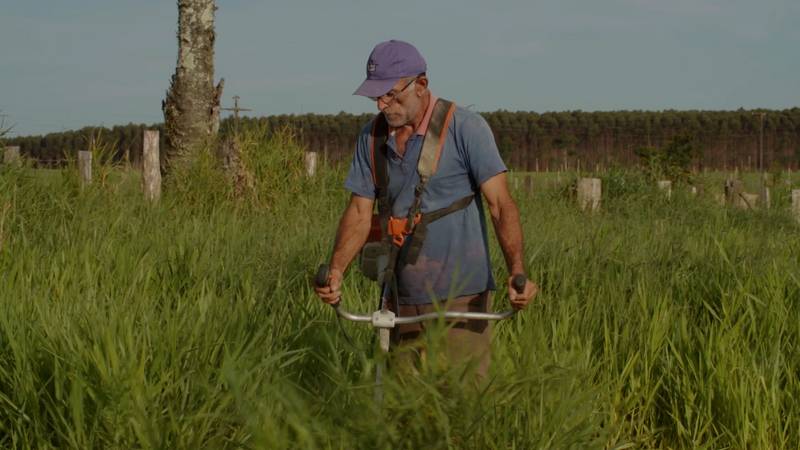

Etevaldo Pereira, one of the main narrators of the film
The story of the forest folk

There is a significant gap between the farmer’s, Pereira’s, Pataxó’s, researchers’, and global corporations’ hopes and realities.
Once upon a time, there was a small-scale farmer, Etevaldo Pereira, Pataxó Indigenous people, and researchers. There were also big global corporations, because they are present everywhere. The group met in Brazil, in a forest that was important to all of them.
The farmer, Pereira, valued the forest because it kept the soil moist and his crops growing. It also kept the goats and cattle alive, while also keeping the air cool. The Pataxó valued the forest because it was their home; they had lived there for centuries. They knew it like a well-organized person knows the back corners of their cupboards. The researchers valued the forest because it held answers to their extractive questions: how does it function? What is its nature? How does it behave? Where does its vitality come from? What causes it to die? And last but not least, the world’s largest corporations valued the forest… Can you guess why? Because they can make money out of it!
This group met in the Brazilian rainforest and in the documentary called MATA. The large corporations refused to participate. They were not, however, completely absent. They were represented by their magnificent eucalyptus plantations.
In the MATA, there is a significant gap between the farmer’s, Pereira’s, Pataxó’s, researchers’, and global corporations’ hopes and realities.
The small-scale farmer wants a plot of land that he can cultivate in peace, but instead he spends a lot of time trying to be heard, despite still not getting the plot of land.
The Pataxó want to be able to be born and die in their homeland. They want to protect the forest that gives them food, medicine, and a place to raise a family. But instead, they have to negotiate with people who are unwilling to negotiate with them. The researchers want to uncover the truth and bust the myth that the eucalyptus is a hungry parasite to the soil. In fact, after seven years of research, they discovered that the massive eucalyptus plantations do indeed dry the soil. It must be noted that the issue, however, is not the eucalyptus itself, but its management.
At the same time, the multinational corporations are living their best life, making money from growing beautiful, fragrant eucalyptus. Congratulations to them! Except that all of this is happening while the rainforest is being destroyed, not only by clearing up the natural forest to plant trees native to Australia, but also by sucking all of the water even from afar. Not only does it hardly ever rain in the rainforest these days, the animals do not like those forests.
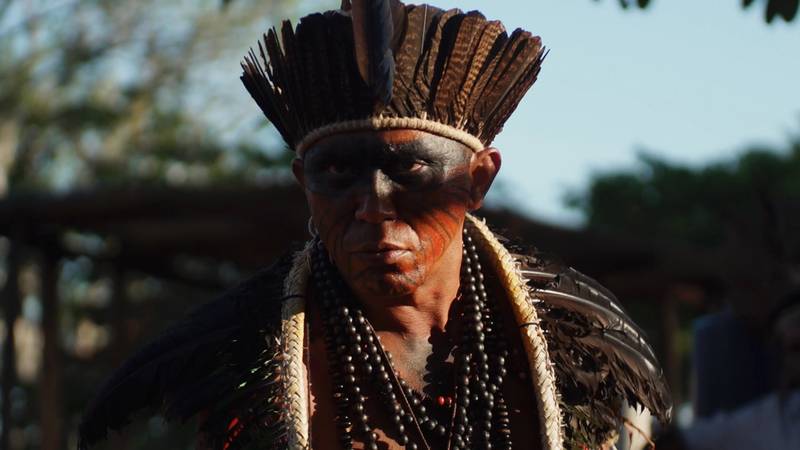

One of the Pataxó leaders who claim self-determination over their territory
Anxious plantation
In the Amazon, the eucalyptus is hungry. It is sucking the life out of the soil.
Eucalyptus is like a parasite, a leech. It sucks all the blood from the soil, the body. Once the body is dry and cold, nearly dead, its lips are plucked away.
This is when the artificial respiration of the body begins. It lasts only a few seconds, just long enough to get the blood pumping. And then the sucking resumes. New lips suck the blood into their starving systems. Still, the new eucalyptus trees are being planted on the dry, nearly infertile land.
The tall, fragile-looking trees are side by side. They sway peacefully in the wind, performing a hypnotic dance. For a brief moment, the dance is peaceful. When the wind gains enough strength to cling to the trees, the trees throw themselves around with such ferocity that their skinny trunks appear to snap. Despite this, their roots remain attached to the ground and they continue to perform their angry dance.
Drones in the MATA show the difference between the natural rainforest and the planted eucalyptus forest: the eucalyptus forest grows higher and higher, until the trees are tall enough to be cut down; the natural rainforest grows in every possible direction. It is more than just a plot of land with trees reaching for the sky; it is an entire ecosystem with complex flora and fauna.
The eucalyptus forest is hardly a forest; it is a plantation or a field, the crops of which are the eucalyptus trees. A drone equipped with a camera captures a eucalyptus plantation so vast that it appears to have no end. The eucalyptus plantation spreads like a virus, killing the healthy cells and replacing them. Always swaying and spreading.
The eucalyptus forest in MATA is an anxious plantation. Although the term “plantation” does not sound like something that a forest could be, it is not merely a metaphor.
Commercial forestry necessitates the planting, maintenance, and growth of trees for commercial purposes. According to the Law Insider dictionary, commercial forestry can be practiced in plantations or native forests.
Given the context, a sham forest of eucalyptus plantation is not only a repulsive sight for MATA viewers, but it is also contributing to the Amazon’s deforestation problem.
Ingrid Fadnes, the co-director of MATA, writes in her NO NIIN essay that when the eucalyptus arrived in Brazil in the 1970’s, “the Food and Agriculture Organization of the UN (FAO) gave the tree plantations official recognition as forest”. Because of that, planting the eucalyptus has been used as a narrative of reforestation. However, planting eucalyptus has had no positive effect on deforestation. Multiple media outlets have reported that the deforestation of Brazil’s Amazon is at its highest level since 2006, soaring to 22 percent.
Of course, eucalyptus isn’t the only problem in the Amazon. Unsustainable farming, logging, and mining are cited as some of the causes of the Amazon’s deforestation, as well as climate change, of course, which is fuelled by deforestation. Deforestation has become a more serious issue in recent years. The Bolsonaro administration has been accused of being indifferent to environmental crimes within the Amazon.
For example, in 2019, the news agency Reuters combed through public and internal government reports and interviewed employees of the agency in charge of rainforest protection. According to Reuters, the Bolsonaro administration weakened the environmental agency by, for example, applying new restrictions on their ability to destroy heavy equipment found at the scene of environmental crimes. It has also reduced the environmental fines.
Although it would be naive to claim that the problems did not exist prior to the current administration, because unsustainable farming, logging, and mining are a result of long-term development, it is unfortunate that the situation has not improved. And while MATA does not cover all of Amazon’s problems, it does highlight one aspect of the problem: the one brought on by the “anxious eucalyptus plantations.”
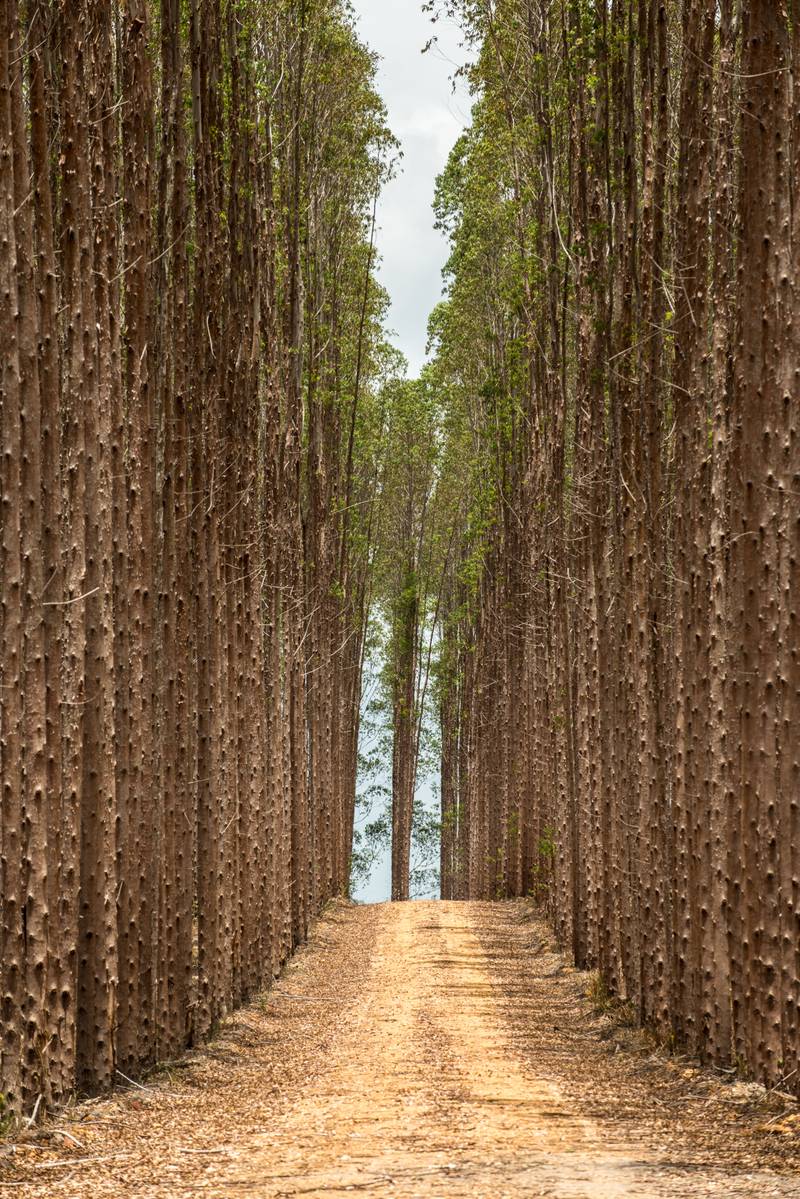

Eucalyptus trees seen in series
From Finland with love

The financial crisis greatly impacted the forest industry. The economic recession caused the demand for paper to fall. In Finland, raw wood became more expensive as demand decreased. The companies operating in Finland have closed several mills, stated WWF in its 2010 report. According to WWF’s report, the forest industry’s output in Finland fell 11% in 2008 and continued to fall in 2009.
The year was 2008. Until the bubble burst, the world’s economy had been steadily growing for years. The global banking and financial crisis precipitated the recession, the effects of which can still be seen today.
The financial crisis greatly impacted the forest industry. The economic recession caused the demand for paper to fall. In Finland, raw wood became more expensive as demand decreased. The companies operating in Finland have closed several mills, stated WWF in its 2010 report. According to WWF’s report, the forest industry’s output in Finland fell 11% in 2008 and continued to fall in 2009.
Simultaneously, international forest companies strengthened their positions in Asia and Latin America. Two large forest industry companies, Finnish and Swedish Stora Enso and Finnish UPM, invested in land and factories in countries such as Brazil, Uruguay, and China.
In 2009, almost 60 percent of the Finnish paper industry’s production capacity and roughly one-third of the Finnish sawmill industry’s production capacity were located outside Finland, WWF reports.
To this day, Finnish companies are still involved in the Brazilian forest industry. There are also eucalyptus plantations owned by the companies. In 2019, the Finnish investigative journalism programme MOT by Yle reported that the company Veracel, which Stora Enso owns half of, has 200000 hectares of land, half of which is eucalyptus plantations.
It would be interesting to know if Finnish companies are involved in the production of eucalyptus products such as copy paper, napkins, or toilet paper, which people use to wipe their dirty bums.
The city of eucalyptus
Eucalyptus trees stand tall and nearly stationery. In this form, they look like skyscrapers constructed by people to house themselves and their offices. The Amazon has evolved into a eucalyptus-filled city. This city is deserted. The empty buildings give the impression of an apocalyptic war site with launched nukes, where all the living have died from radioactive radiation. In this city, the pesticides are the nukes.
No one really knows what is in the pesticides used by the forest companies, the characters in MATA claim. Pesticides are self-regulated by companies, so they do not need to be reported.
What people do not know is that destroying the rainforest has an impact on areas that are not part of the rainforest. Because the Amazon is often considered to be the Earth’s lungs, anything that threatens it is a threat to the world and humankind. It feels rather useless to even write that sentence now, since it is common knowledge. The saddest part is that for a long time, knowing that converting a rainforest into a city of eucalyptus has disastrous consequences was not common knowledge – even though the knowledge was there.
There were people who spoke about the environmental mistreatment of nature and its consequences before it was taken seriously, as it is to some extent now. Indigenous peoples have been talking about it for hundreds of years but they have not been heard. Despite the fact that the global environmental movement has grown in recent years, thanks to the youth demonstrating all around the world, it appears that the situation has not changed significantly, at least not in Brazil.
In MATA, a member of Pataxó kneels on the ground in front of representatives with whom they are attempting to negotiate. He pleads for the Pataxó to be allowed to remain in their homeland, which is under threat of being taken away from them. The negotiators take a handful of soil and declare that it is sacred to all humanity. They do not, however, respond to the peoples’ cries. They simply sit in a chair, their white shirts tucked in.
The End
Once upon a time, there was a small-scale farmer, the Pataxó, and researchers. There were also large global corporations present because they are everywhere. They met in MATA, an emotional and thought-provoking documentary in which issues of the land are presented through its peoples’ stories and their fight for their homeland and its environment.
Other than the stories, the footage from the drone and on the ground is impactful. They convey a message about the state of the forest. It can be seen not only in the massive eucalyptus fields, but also in the bodies of water, lakes and rivers, that have dried up as a result of cultivation.
MATA’s video footage and the peoples’ stories leave the viewer feeling gloomy, angry, and sad, but also perplexed. How can this be happening? The answer is simple: it’s all about money.
It is tempting to point a finger in one direction, to Brazil and its government, to Finland and other countries, seizing the opportunity, or even to global corporations that function similarly to states, but this may be too simplistic. Since the issue is the system created by the people in power, namely those from the global north, how optimistic can one remain? Can a system that was created by these people ever be changed?
One thing that MATA teaches is that no matter our background, we can learn to understand and respect the forest. The knowledge of the forest is available to all of us, if we are just willing to see and hear it. We do not even have to search for all the answers by ourselves; we can start by listening to the stories of those that really appreciate the forest, the indigenous people that have learned to respect it since they were young, and those non-indigenous people that have woken up before us.
A viewer that wishes to see extensive statistics on the forestry in the Amazon will not get that in MATA. However, MATA will give the viewer a reason to research the topic further, it makes the viewer interested in finding the statistics.
MATA can be recommended to anyone, but especially to those who currently value the forest in terms of dollars rather than as a source of oxygen or a place to live. MATA aims to make its viewers understand why Amazon is important—to all of us.



